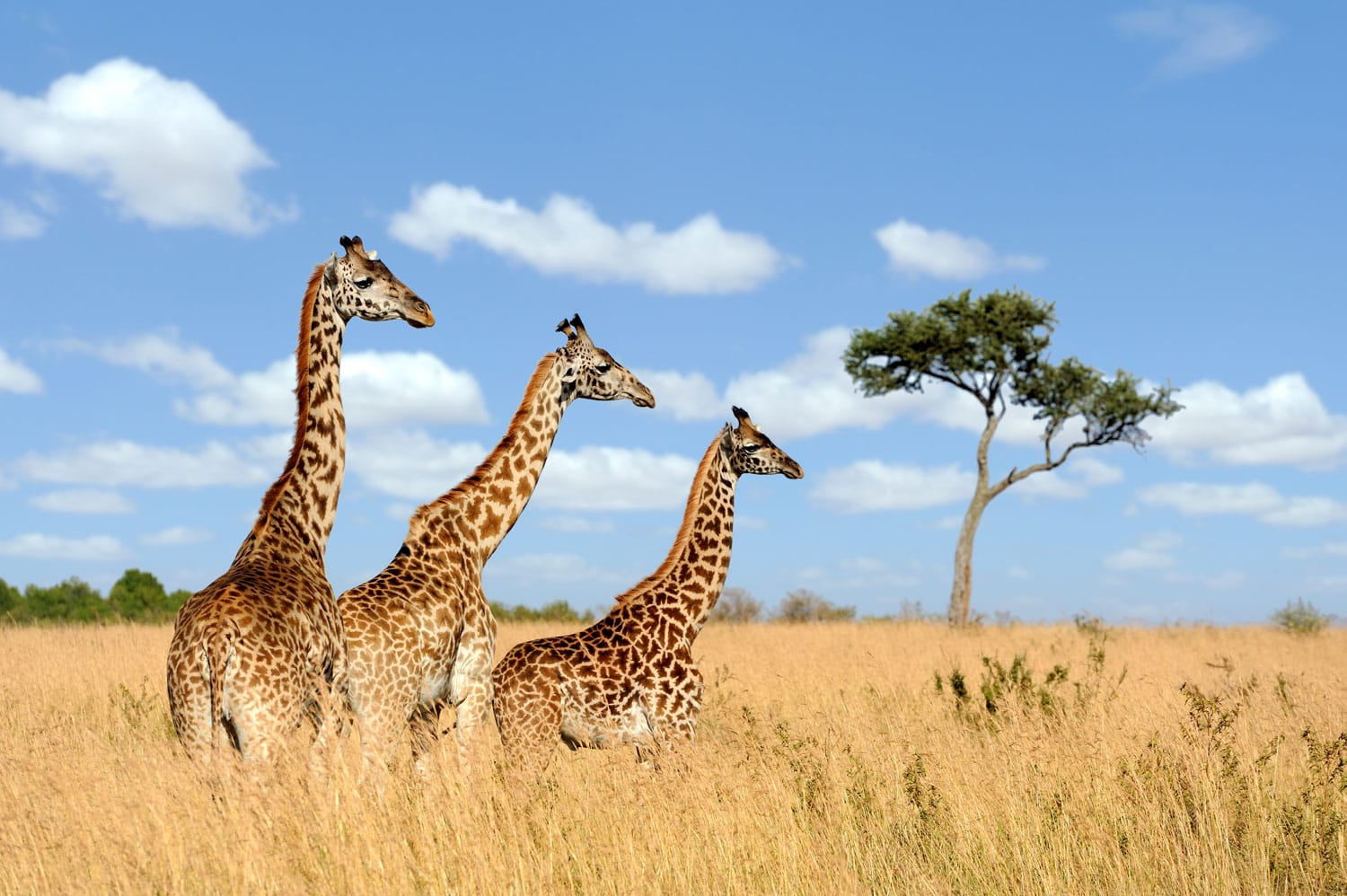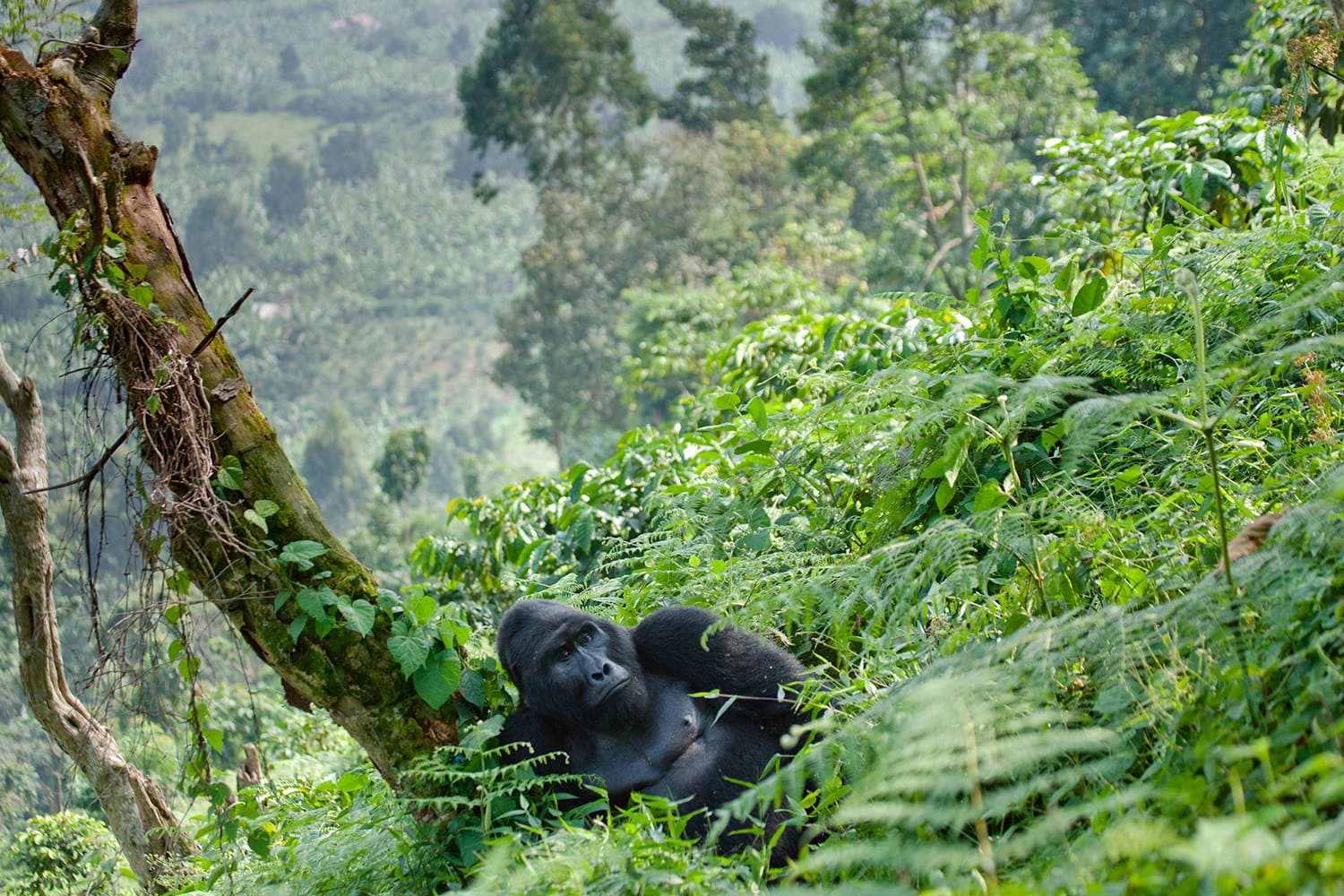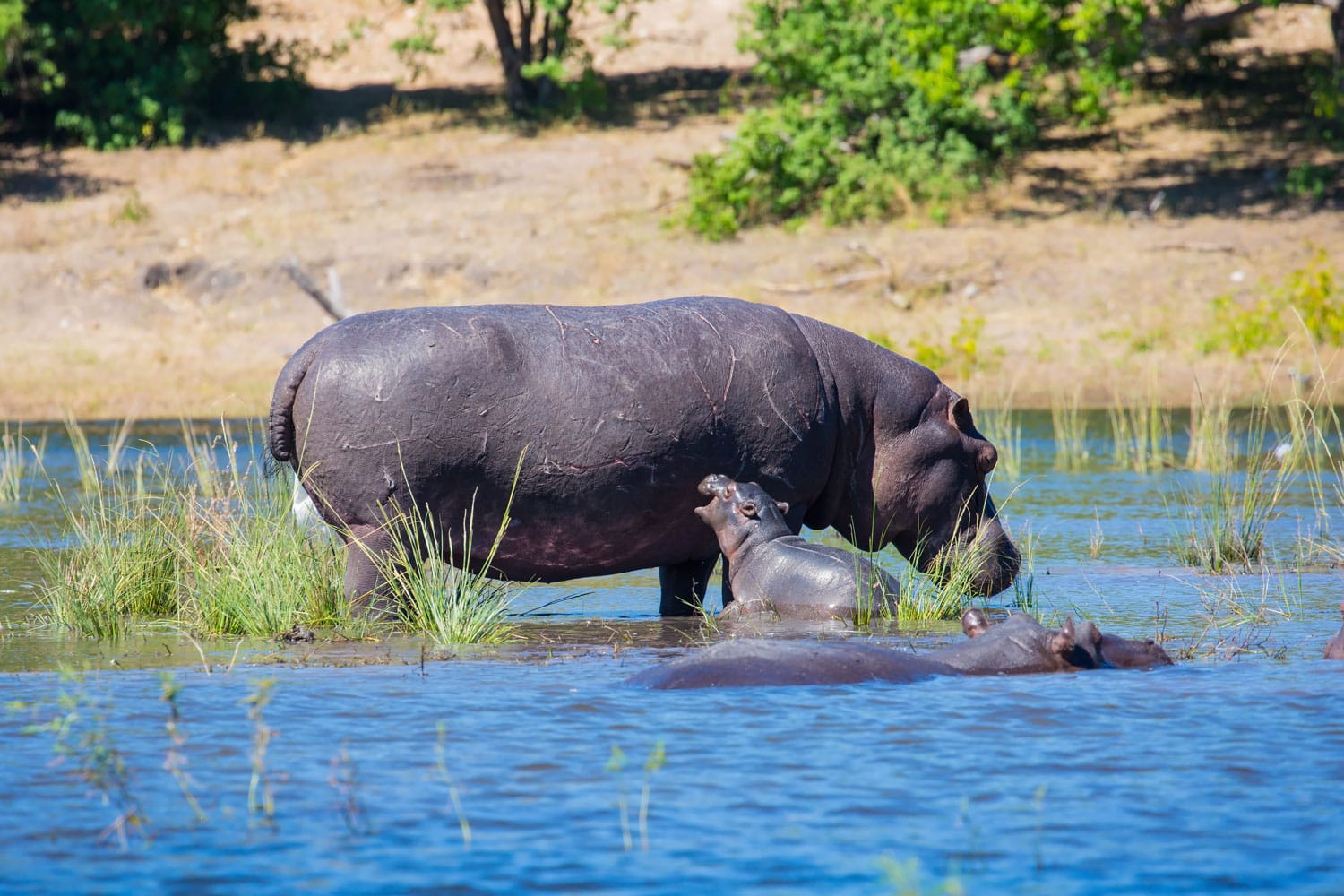So you’re thinking of taking a safari in Uganda? That’s great! Uganda has some unmatched natural landscapes, like that of Lake Victoria, the world’s second-largest lake and largest tropical lake! This East African country is also home to over 1,000 bird species and 10 national parks that provide a perfect environment for mountain gorillas, elephants, giraffes, crocodiles, and many more animals. It’s safe to say Uganda is one of the best African countries for seeing natural African landscapes and plenty of animals on a safari.
While Uganda is one of the fastest-growing countries in Africa, it’s still a developing country, which makes some travelers nervous about planning a Uganda safari tour. Well, that’s where we here at Road Affair come in! We’ve carefully crafted this ultimate guide to planning a safari in Uganda so that you can put all your worries aside and plan the perfect holiday. We’ll cover visa and health requirements, what to pack, the best times to book your trip, and even the best places to visit on your safari. Whether you want to take a budget-friendly or luxury safari in Uganda, you’ll find everything you need to plan your trip below!
What Makes a Uganda Safari Unique
Uganda is nicknamed “the Pearl of Africa” for its natural beauty and abundant wildlife. It not only offers countless beautiful landscapes, but is also home to the largest number of primates of any country worldwide. If you want to have your Jane Goodall moment by getting up close and personal with mountain gorillas, Uganda is the place to go, as it’s one of only 10 countries in the world where you can easily view these primates.
Several other big-game animals call Uganda home, including African bush elephants, Cape buffaloes, and African lions. Uganda also boasts more fresh water than any other African country. In fact, 26% of the country is covered in lakes and rivers, making for excellent boat safaris!
Visa Requirements for Travel to Uganda
Visa requirements for Uganda depend on the nationality of the passport you hold, but anyone wishing to enter for tourism purposes needs to obtain a tourist visa. You can fill out the form on the official website here.
You should personally check the requirements for your passport on the official immigration website, as Uganda’s entry requirements are always changing. No matter which country you hold a passport for, the passport must still be valid for at least six months after the date of your arrival. As of 2023, the required attachments for a Uganda single-entry tourist visa are a valid passport, a passport-sized single photo, a travel itinerary and accommodation bookings, tour plans, and a certificate of yellow fever vaccination.

Vaccination Requirements for Uganda
To enter Uganda, you will have to be vaccinated against certain diseases (this is Africa, after all). While you’ll need to show proof of vaccination against yellow fever to obtain your tourist visa, the CDC and WHO recommend getting vaccinated for several other diseases before visiting Uganda, including typhoid, hepatitis A and B, rabies, and meningitis (as Uganda has some hotspot regions for meningitis in the dry season).
You should also get malaria pills from your doctor. In any case, you’ll definitely need to visit your doctor before jetting off to Uganda! They can advise you on the vaccinations to get and medications to take with you.
While travel insurance isn’t mandatory for entry, both the Uganda government and we here at Road Affair strongly recommend it. You never know what could happen on an African safari, and you’ll likely be miles away from the nearest hospital. It’s best to save yourself the stress (and potentially thousands of dollars in medical bills) and purchase travel insurance in advance. We recommend SafetyWing, which offers coverage for as little as $10 a week. You can get a quick, nonbinding quote below.
What to Pack for a Uganda Safari
When packing for your safari tour in Uganda, you should prepare thoroughly for traveling in a remote area and pack it all in a minimalist way. Yes, that sounds a bit contradictory, but it’s doable if you pack smart. These are the top five things we recommend packing for a Uganda safari trip:
- A durable backpack. Easily the No. 1 purchase you need to make when planning a Uganda trip is a durable and comfortable pack that can fit everything you need! You can see our list of the best travel backpacks here.
- Binoculars. We recommend packing your own set of binoculars so you don’t miss out on any of the animals on safari. Check out our recommendations for the best compact travel binoculars here.
- A first-aid kit. A good first-aid kit is a must when you travel anywhere. At a minimum, your kit should include ibuprofen (and any other medications you take), bandages, antibacterial ointments, antiseptic wound cleaner, gauze, cream or gel for insect bites, medical tape, and alcohol pads.
- A purifying water bottle. You won’t have quick access to drinkable water on safari, so it’s a good idea to bring a water bottle that filters out bacteria and viruses. This is especially handy if you get lost in the jungle or separated from your group. See our list of the top water purifiers for backpacking here.
- Warm clothes. While Africa is known for being hot, it can actually get quite cool in the mornings. It’s best to pack a light jacket, long pants, and warm socks for those early morning adventures!
Also be mindful of the color of clothes you bring. Red and yellow are associated with political parties in the area, so you could be targeted for wearing these colors.
Safety Concerns in Uganda
While Uganda is a beautiful country filled with friendly locals, you should be aware of some travel advisories. First of all, Uganda shares a border with several other African countries, including South Sudan. There is currently a high risk level within 50 kilometers (about 31 miles) of the South Sudanese border due to terrorism by rebel groups. The U.S. Department of State advises travelers to avoid this area unless you are going to a national park with a reputable tour guide. The same travel advice applies within 50 kilometers of the border with the Democratic Republic of the Congo.
Travelers should also know that Uganda passed an “anti-homosexuality” bill in 2023, making it illegal to perform sexual acts with a person of the same gender. While the bill is still under discussion, members of the LGBTQ+ community should exercise high caution when visiting.
Best Time to Book a Uganda Safari
Uganda has a tropical climate, meaning there are two dry seasons and two wet seasons. The best time to go is during one of the dry seasons – December to February and June to August. This is when the weather will be the best and you’ll have a better chance of seeing mountain gorillas and other big game, as the animals will concentrate around watering holes. Animals will also be easier to track, as the hiking trails won’t be washed out by rain.
However, if you want to save money on your Uganda safari tour, consider booking during the low season in October. You’ll find great deals on accommodation and tours, but the downside is that it will be rainy.
Where to Go on a Uganda Safari
There are 10 national parks in Uganda, each offering something unique. Whether you’re most interested in dense jungles, mountains, or waterfalls, these are our top recommendations for where to take a Uganda safari.

Take a Gorilla Trekking Safari in the Bwindi Impenetrable Forest
One of the best parks for gorilla trekking in Uganda is the Bwindi Impenetrable Forest, which is home to nearly half of the world population of mountain gorillas. This national park is on the western side of the country, along the border with the Democratic Republic of the Congo. Getting there is a considerable journey in itself, as it’s about a 12-hour drive from the capital city of Kampala.
A guided safari through this jungle is an unforgettable experience, with its dense forest and variety of wildlife offering amazing views. A jungle trek isn’t easy, though, especially when you’re trying to find mountain gorillas. Bwindi’s gorillas do not have GPS tags, so guides have to rely on their tracking skills. This means it could take hours to find them – but it will be worth the trek when you do!
You’ll need to purchase a permit to see the gorillas in advance for around $700. While this sounds like a hefty cost, it’s actually cheaper than neighboring Rwanda’s gorilla permits, and it includes the fees for park entry, parking, rangers, advanced trackers, and gorilla watching. About 75% of the ticket cost goes toward protection for the park’s gorillas.
Guided safaris in the park typically last two or three days, giving you plenty of time to see some mountain gorillas. Another popular option is a combined tour that takes you to Queen Elizabeth National Park next, as it’s only a four-hour drive from Bwindi.
If you want to see the gorillas in Bwindi, consider this three-day trekking safari. A booking for this five-star tour covers all transportation, accommodation, food, and the gorilla trekking permit!
Best Accommodation Near Bwindi Impenetrable Forest
For great accommodation near Bwindi, consider staying at Karungi Camp. This homey hotel and campground offers an airport shuttle, an on-site bar and restaurant, and free Wi-Fi.
Seek Out Tree-Climbing Lions at Queen Elizabeth National Park
Queen Elizabeth National Park, located near the border of the Democratic Republic of the Congo, is easily one of the most popular places to take a safari in Uganda. This is one of only two places in the world where you can find tree-climbing lions, and it’s also home to chimpanzees, hippos, elephants, and zebras. The park has several fantastic lodges, and its roads are well maintained.
The park’s most popular tour is the three-day savanna and river safari, which includes a boat ride to spot hippos, chimpanzee tracking, and game drives to see elephants and buffaloes. There are some unique ways to see the park as well, including a hot-air balloon safari that will float you high above the African plains! For a one-of-a-kind experience, you can even stay with local tribes in the park, who harvest salt from nearby Lake Katwe and often engage in energetic dances and performances.
This two-day safari in Queen Elizabeth National Park is an ideal tour for experiencing the park. The cost covers transportation, meals, accommodation, and all park fees.
Best Accommodation Near Queen Elizabeth National Park
If you plan to stay a few nights in the park, you can’t go wrong with Queen Elizabeth Bush Lodge. This fantastic hotel is the ideal safari retreat, offering complimentary breakfast and the chance to see elephants right outside your room!
Track Chimpanzees in Kibale Forest National Park
One of the most popular safaris in Africa is the chimpanzee trek in Kibale Forest National Park, which boasts the highest population of primates on the continent. The park is about a five-hour drive from Kampala and a few hours away from Queen Elizabeth National Park.
You’ll find plenty of playful monkeys in the jungles of Kibale, whose 13 primate species include L’Hoest’s monkeys, blue monkeys, red-tailed monkeys, and Africa’s largest population of red colobuses. You can also see over 325 bird species as you trek its many hiking trails and cultural walking paths.
While the park is obviously incredible for monkey trekking, you won’t be chasing elephants and hippos here. Kibale isn’t home to many big-game animals, so it’s common to bundle this safari with a tour of Queen Elizabeth National Park to see its rare climbing lions and other large wildlife. Another stunning natural attraction near Kibale are the crater lakes in the neighboring city of Fort Portal.
Best Accommodation Near Kibale Forest National Park
Isunga Lodge is easily the best place to stay near Kibale. The hotel offers fantastic amenities, including an outdoor swimming pool, an on-site restaurant, and bike rentals. It’s also ideally located – only a 20-minute drive from Kibale’s Kanyanchu Visitor Center.
See Mountain Gorillas in Mgahinga Gorilla National Park
Mgahinga Gorilla National Park is one of two incredible national parks where you can see Uganda’s mountain gorillas. Its location on the southwestern tip of the country, along the border with Rwanda and the Democratic Republic of the Congo, makes it less popular than Bwindi and other parks, but it’s definitely one to add to the bucket list if you want to see mountain gorillas up close.
The park’s landscape includes three extinct volcanoes as well as montane forest and woodland ecosystems, which are home to forest elephants, bush pigs, buffaloes, and various bird species. Mgahinga is also known for its golden monkey population and offers trekking tours to find these funny, lively primates. A permit to track mountain gorillas here costs the same as the Bwindi one ($700), but the trekking permit for the golden monkeys is significantly less expensive – around $60 per person.
A gorilla trek in Mgahinga can last two to eight hours, depending on where the gorillas are that day. These treks can also be quite dangerous for children, so they’re only open to ages 15 and older.
Best Accommodation Near Mgahinga Gorilla National Park
If you’re planning to spend a few days in Uganda’s southernmost park, consider booking the Ntebeko Homestay to stay with locals in the neighboring town of Kisoro. The accommodation includes breakfast (English and Irish style) and a lovely garden.

Chase Waterfalls and Hippos at Murchison Falls National Park
You can’t skip out on Murchison Falls National Park while in Uganda. It takes anywhere from three to six hours to reach from Kampala, but it’s well worth the drive. This famous national park is where you’ll find the world’s most powerful waterfall, which shoves 200 bathtubs’ worth of water through the 7-meter-wide gorge every second! You’ll also get the chance to see hippos, chimpanzees, rhinos, cheetahs, Rothschild’s giraffes, and rare shoebill storks.
There are plenty of activities to book at the park, including hot-air balloon safaris, launch trips to see hippos and crocodiles, cultural tours, chimpanzee treks, and bird-watching excursions. You can also follow several hiking trails to see primates and tropical birds. If you want to go specifically for bird-watching, the wet season is the best time to visit Murchison Falls.
If this sounds like your kind of place, consider booking this two-day safari of Murchison Falls National Park and Ziwa Rhino Sanctuary. The tour includes all transportation, park entry, accommodation, meals, water, and a guide.
Best Accommodation Near Murchison Falls National Park
Kikonko Lodge is the best place to stay during your safari stop at Murchison. The four-star hotel offers a nice breakfast selection (a la carte and cooked to order), an outdoor swimming pool, and bike rentals.
Go Bird-Watching at Lake Mburo National Park
Another excellent stop for your Uganda safari trip is Lake Mburo National Park. While it’s the country’s smallest national park, this wetland reserve is one of the best places for a bird-watching safari in Uganda. It’s home to over 350 bird species, along with hyenas, buffaloes, leopards, hippos, and zebras. You can explore the park by car or boat – or on foot, with no lions or elephants here to worry about!
Besides bird-watching, you can embark on several adventures at Lake Mburo, including a night safari to see the leopards, a boat safari to see hippos and crocodiles, horseback tours, and village walks to meet locals. The park is in the country’s southern region, about five hours from Kampala, so you can also conveniently bundle it with Bwindi or Mgahinga to see the mountain gorillas.
If you want a packed itinerary for a one-day safari in Uganda, book this full-day safari tour of Lake Mburo. The tour includes a trip to the equator and a boat cruise in the park to spot hippos and crocodiles.
Best Accommodation Near Lake Mburo National Park
Hyena Hill Lodge is a must-stay right outside Lake Mburo. It offers a beautiful selection of classic cottages, an on-site bar and restaurant, and stunning mountain views.
A safari tour in Uganda is a once-in-a-lifetime adventure, and now you know everything you need to book your ultimate Uganda holiday. Before you know it, you’ll be knee-deep in the African jungle, feet away from mountain gorillas and other beautiful animals. Can we just say how jealous we’ll be?
Comments